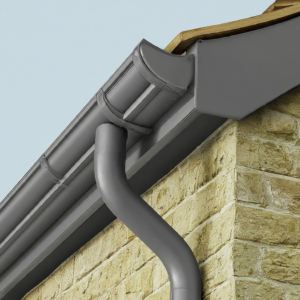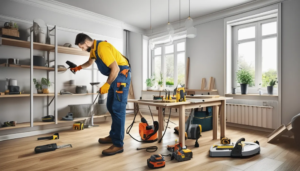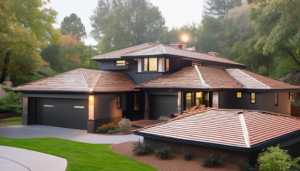
Pea gravel patios have become a popular choice for homeowners looking for an attractive and affordable outdoor space. Made from small, smooth pebbles roughly the size of peas (hence the name), pea gravel offers a natural aesthetic that blends seamlessly with gardens and landscapes. But before you dive into creating your own pea gravel paradise, it’s important to weigh the pros and cons to see if it fits your lifestyle.
Pros of Pea Gravel Patios:
- Budget-Friendly: Pea gravel is significantly cheaper than concrete, pavers, or even some types of decking materials. This makes it a great option for budget-conscious homeowners or those creating a temporary patio.
- Easy Installation: Installing a pea gravel patio is a DIY-friendly project. You’ll need to prepare the base by excavating the desired area and lining it with landscaping fabric to suppress weeds. Then, simply add a layer of edging and fill it with pea gravel.
- Natural Drainage: Pea gravel is highly permeable, allowing water to drain freely through the stones. This prevents puddling and flooding, making it ideal for areas prone to heavy rain.
- Comfort Underfoot: Unlike larger, jagged gravel, pea gravel is smooth and comfortable to walk on barefoot. This makes it a great choice for patios frequented by children or those who enjoy lounging outdoors.
- Low Maintenance: Pea gravel requires minimal upkeep. Occasionally, you may need to top up the gravel to maintain depth and rake out any leaves or debris.
- Versatility: Pea gravel comes in various colors, allowing you to create a custom look that complements your home’s exterior. You can even incorporate borders or patterns using contrasting gravel colors.
- Easy Removal: Unlike permanent patio materials, a pea gravel patio can be easily removed if you decide to change your landscaping design in the future.
Cons of Pea Gravel Patios:
- Messy: Pea gravel can track easily into your home, especially if you have pets or children who frequently use the patio.
- Difficult Cleaning: Spills and dirt can become embedded in the gravel, making it challenging to clean. While you can hose it down occasionally, deep cleaning requires removing and replacing some of the gravel.
- Furniture Issues: Regular patio furniture with thin legs can sink into the pea gravel, making it unstable and uncomfortable to use. Opt for furniture with wider bases or consider built-in benches.
- Weed Growth: If not installed properly with a weed barrier, weeds can sprout through the pea gravel, requiring regular weeding.
- Uneven Surface: Walking on pea gravel, especially in deeper layers, can feel uneven and unstable, particularly for people with mobility issues or those wearing high heels.
- Limited Use: Pea gravel patios may not be ideal for high-traffic areas or activities like playing ball games.
All these services lie under renovation services. Please contact us if you want the same for your home.
What People Are Saying About Pea Gravel Patios:
- Sarah B. from Houston, Texas: “We love our pea gravel patio! It was so easy to install ourselves and looks great in our backyard garden. The kids love walking on it barefoot, and it feels nice underfoot. The only downside is that it does track into the house a bit, but we keep a doormat outside to help with that.”
- David M. from Portland, Oregon: “I had a pea gravel patio for a few years, and while it was affordable and looked nice, it wasn’t very practical. My patio furniture kept sinking in, and it was a nightmare to clean up spills. I eventually replaced it with pavers for a more stable and easier-to-maintain surface.”
- Lisa W. from Atlanta, Georgia: “We have a pea gravel patio with a built-in fire pit, and it’s perfect for cozy nights outdoors. The gravel feels comfortable underfoot, and the natural drainage prevents any issues with water pooling around the fire pit. I do recommend using a good quality weed barrier to minimize weed growth.”
Pea Gravel Patios: Affordability, Installation, and Maintenance
Pea gravel patios have captured attention for their budget-friendly appeal. Let’s delve deeper into the affordability factor, explore the installation process, and understand the maintenance requirements to help you decide if a pea gravel patio is the perfect fit for your outdoor space.
Affordability Breakdown:
- Material Costs: Pea gravel itself is a steal compared to other patio materials. Prices typically range from $26 to $68 per cubic yard, with an average of $47. On top of that, you’ll need landscaping fabric, edging materials, and possibly crushed stone for the base.
- DIY vs. Professional Installation: The beauty of a pea gravel patio lies in its DIY potential. With some muscle and following proper instructions, you can significantly save on labor costs. However, hiring a professional can ensure a well-prepared base, perfect edging, and a level finish – especially for larger or more complex patios.
Here’s a cost comparison to give you an idea:
- DIY Installation: Material costs for a 100-square-foot patio could range from $100 to $200, depending on gravel quality and edging choices.
- Professional Installation: Expect professional installation costs to range from $7 to $20 per square foot, translating to $700 to $2000 for a 100-square-foot patio.
Installation Know-How:
Installing a pea gravel patio is a manageable DIY project, but proper preparation is key. Here’s a simplified breakdown of the steps involved:
- Planning and Marking: Sketch your desired patio size and shape. Mark the perimeter on the ground with spray paint or landscaping stones.
- Excavation: Dig out the marked area to your desired depth. Aim for 4-6 inches for the pea gravel layer, with an additional 2-4 inches for a crushed stone base (recommended for better drainage and stability).
- Base Preparation: Lay down landscaping fabric to suppress weed growth. Add a layer of crushed stone, compacting it firmly with a tamper.
- Edging Installation: Install bender board or other edging materials around the perimeter to confine the pea gravel and create a clean finish.
- Pea Gravel Installation: Pour the pea gravel evenly over the prepared base. Rake it smooth to achieve the desired level.
Maintenance Matters:
Pea gravel patios are known for being low-maintenance, but some upkeep is necessary to ensure their longevity and aesthetics. Here’s what you need to know:
- Regular Raking: Use a leaf rake to maintain a smooth surface and prevent the pea gravel from becoming uneven. This also helps prevent weed growth.
- Weed Control: While the weed barrier minimizes weed problems, some determined ones might sprout. Spot-treat them with herbicide or manually remove them.
- Topping Up: Over time, pea gravel can get displaced or lose volume due to settling. Top up the gravel as needed to maintain the desired depth.
- Seasonal Maintenance: During fall, remove leaves and debris that accumulate on the surface. In winter, avoid using salt for de-icing, as it can damage the gravel. Opt for a snowblower or shovel to remove snow.
The Final Verdict:
Pea gravel patios offer a unique combination of affordability, ease of installation, and a natural aesthetic. However, they do come with some drawbacks, particularly regarding mess and limited functionality. Carefully consider your lifestyle and priorities before deciding if a pea gravel patio is the right choice for your outdoor space.
Additional Tips:
- If you decide to go with a pea gravel patio, choose a high-quality gravel that is well-washed and free of dust.
- Use a bender board or edging material to create a defined border and prevent the gravel from migrating.
- Consider adding a layer of crushed stone beneath the pea gravel for better drainage and stability.
- Regularly rake the pea gravel to maintain a smooth surface and prevent weeds from taking root.
By weighing the pros and cons and following these tips, you can create a beautiful and functional pea gravel patio that
-
Challenges to Face While Installing Soffits and Gutters
Installing soffits and gutters is a critical component of maintaining the structural integrity and aesthetic appeal of a home. However,
-
What Tasks A Handyman Can Easily Manage in Minnesota?
Handymen play a crucial role in maintaining and improving homes across Minnesota. From minor repairs to significant renovations, these skilled
-
Roof Replacement in Minnesota Considering Weather Conditions: Materials, Layouts, and Techniques
Roof replacement is a significant home improvement project that demands careful consideration, especially in a state like Minnesota where the
-
Futuristic Residential Remodeling – What to Expect: The Advancements at Home?
In recent years, the realm of residential remodeling has undergone a significant transformation. With advancements in technology, innovative materials, and
-
How to Increase the Water Pressure in Kitchen Faucets?
A common household issue many homeowners face is low water pressure in their kitchen faucets. This problem can disrupt daily
-
DIY – How to Make Engraved Garden Labels On Your Own?
Creating a beautiful and well-organized garden is a rewarding experience for any gardening enthusiast. One way to add a personal
-
Hide Screws in Wood in 7 Different Ways: Latest Techniques
In the realm of woodworking and furniture making, aesthetics and durability often go hand in hand. One of the persistent
-
Replace Kitchen Track Lighting in an Efficient Way
Kitchen track lighting has become a popular choice for homeowners these days who are seeking a versatile and modern lighting











